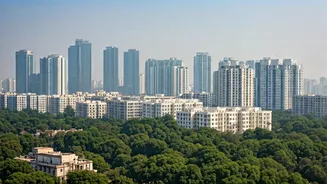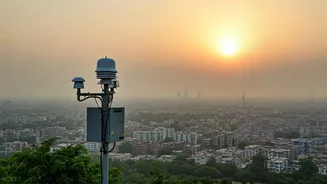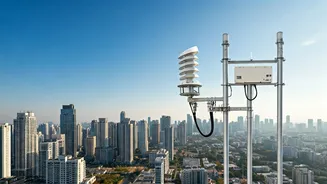Marginal Air Improvement
Noida's air quality has seen a minor improvement, according to recent observations. This offers a short-term relief for residents. Experts, however, highlight
that this is unlikely to persist and is more of a temporary reprieve rather than a sustained trend. The situation underscores the volatile nature of air quality, which is susceptible to various factors, including seasonal changes and local pollution sources. While the current improvement may be welcome, it should not be misinterpreted as a sign of resolved air pollution concerns. The underlying issues remain, and further steps are necessary for a lasting enhancement in air quality. Addressing pollution requires comprehensive strategies and persistent effort from authorities and the community.
Identifying Pollution Hotspots
A significant part of managing air quality involves the identification and regulation of pollution hotspots. Authorities have identified 17 locations in Noida and Ghaziabad as areas with high levels of pollution. This focused approach enables the allocation of resources and the implementation of targeted interventions. These hotspots, which contribute significantly to overall pollution levels, necessitate immediate attention. Comprehensive strategies, including enhanced monitoring, stricter enforcement of emission standards, and promoting cleaner technologies, are crucial for mitigating pollution in these critical areas. Prioritizing these hotspots is a necessary step in the larger aim of improving air quality for the benefit of all citizens in the region, leading to a healthier environment.
Experts' Cautious Outlook
Experts are cautioning against optimism regarding the recent improvement in Noida's air quality. They stress that the enhancement is likely short-lived, with seasonal factors and local pollution sources influencing air quality. The experts advocate for a more cautious interpretation of the data, emphasizing the need for ongoing vigilance and sustained efforts to combat pollution. Sustained improvements demand enduring action rather than a reliance on temporary fluctuations. This cautious stance underlines the importance of maintaining focus on the root causes of air pollution and implementing comprehensive solutions. Public health and environmental wellbeing require continued monitoring, stringent regulations, and proactive community engagement.













